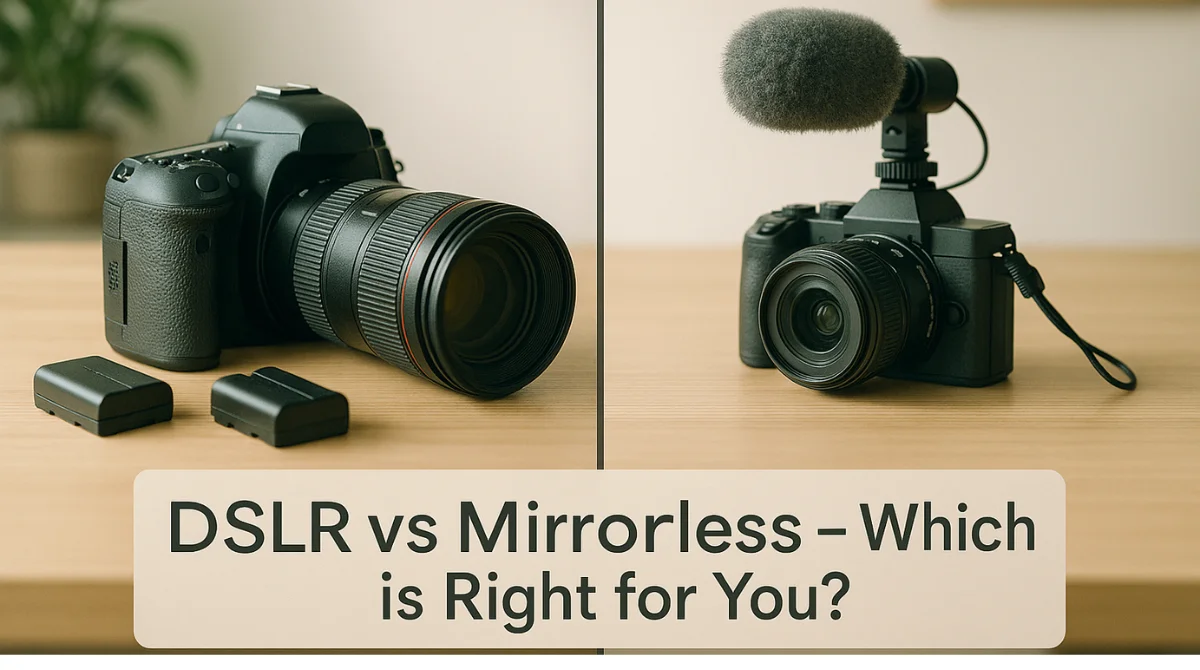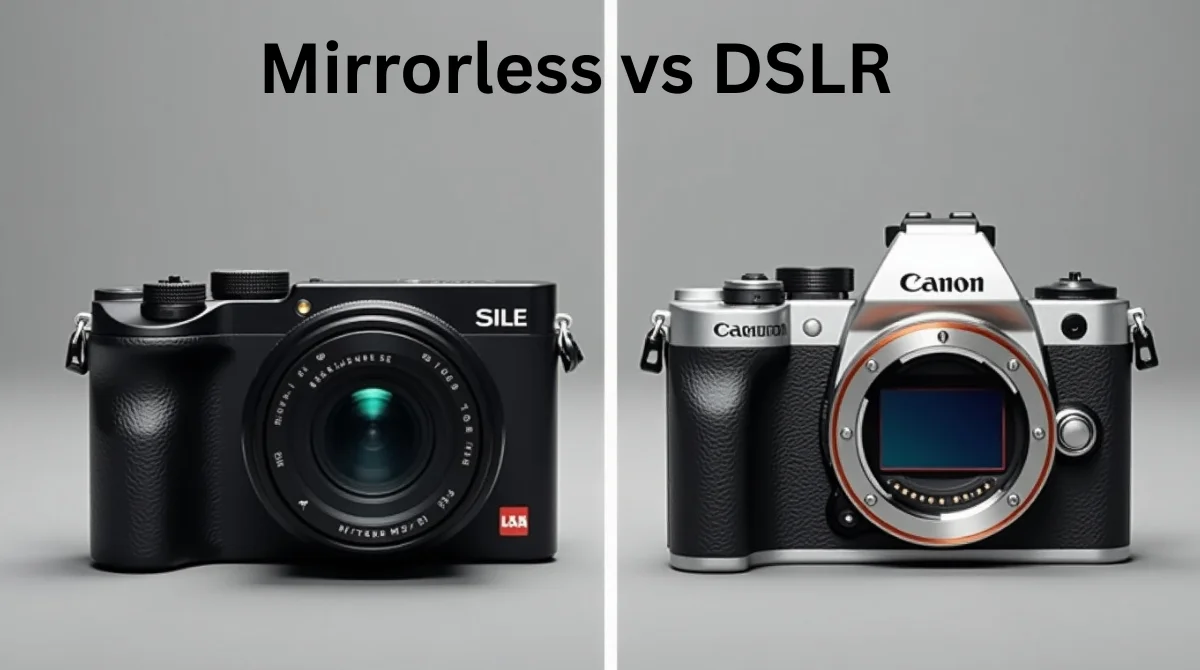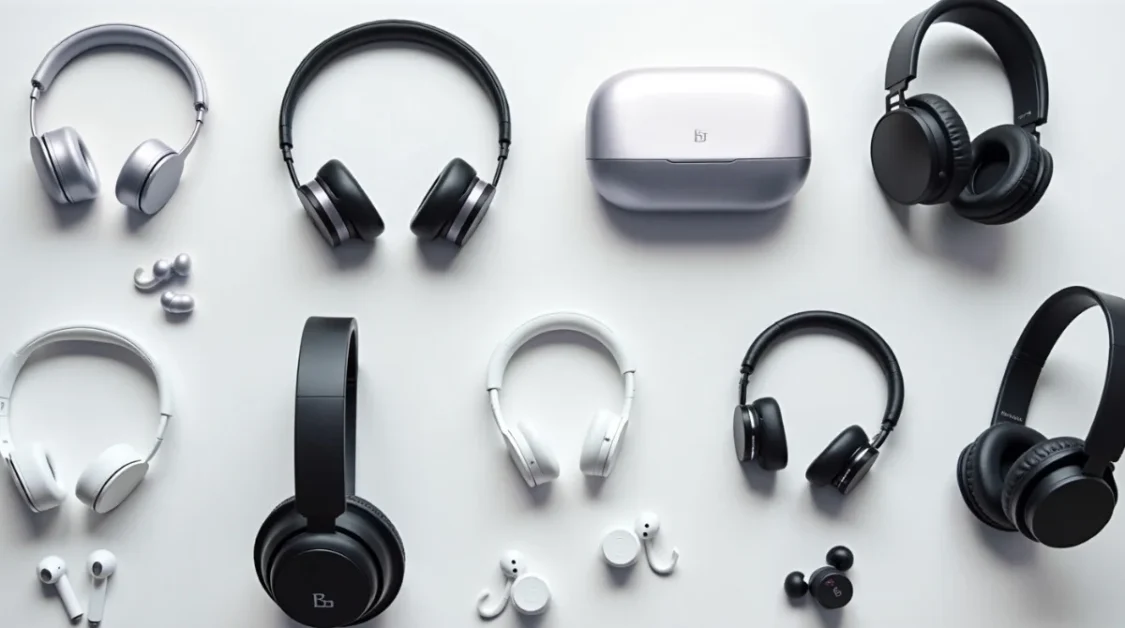Choosing between a mirrorless and a DSLR camera can be challenging, especially with the rapid advancements in camera technology. Both types have their unique strengths and cater to different photography needs. This guide will help you understand the key differences to make an informed decision.
Understanding the Basics
DSLR Cameras
DSLR stands for Digital Single-Lens Reflex. These cameras use a mirror and prism system to let you see exactly what the lens sees through an optical viewfinder. When you press the shutter button, the mirror flips up, and light reaches the image sensor to capture the photo. This design offers clear, lag-free viewing, especially useful in bright light or fast action shots. DSLRs are known for their durability, excellent battery life, and wide range of compatible lenses. They’re a favorite among professional and hobbyist photographers who value control, precision, and traditional photography handling.
Mirrorless Cameras
Mirrorless cameras, as the name suggests, do not have a mirror mechanism like DSLRs. Instead, light travels directly through the lens to the image sensor, which then displays the image on an electronic viewfinder (EVF) or the rear LCD screen. This simplified internal design makes mirrorless cameras generally more compact, lightweight, and easier to carry. They are ideal for travel, street photography, and everyday use. Despite their smaller size, mirrorless cameras often include advanced features such as fast autofocus, high-resolution sensors, and excellent video capabilities, making them popular among both beginners and professional photographers.
Size and Weight
Mirrorless cameras are typically more compact and lighter than DSLRs due to the absence of a mirror and optical viewfinder. This design reduction in size and weight makes them a popular choice for travel and street photography, where portability is essential. For example, the Canon EOS R5 mirrorless camera weighs approximately 152 grams less than its DSLR counterpart, the Canon 5D Mark IV. However, this is not always the case. Some high-end mirrorless cameras, particularly those with larger sensors or additional features, can be as bulky or even heavier than DSLRs. Despite the weight advantage of most mirrorless models, users looking for lightweight cameras may need to consider specific models, as higher-end variants can counteract the portability benefit traditionally associated with mirrorless designs.
Viewfinder Experience
Optical Viewfinder (OVF) in DSLRs:
DSLRs use an optical viewfinder, which allows users to see the scene directly through the lens using a mirror and prism system. This provides a clear, lag-free view of the subject, making it ideal for bright lighting conditions and fast-moving subjects. The optical nature of the viewfinder doesn’t rely on electronics, so it ensures real-time, accurate representation, even in challenging conditions.
Electronic Viewfinder (EVF) in Mirrorless Cameras:
In contrast, mirrorless cameras use an electronic viewfinder (EVF), which displays a digital preview of the image on a small screen inside the viewfinder. The EVF shows real-time adjustments to exposure, white balance, and depth of field before the shot is taken. While EVFs offer more flexibility, they can be difficult to use in bright sunlight and may introduce slight lag due to their digital nature.
Autofocus Performance
Mirrorless Cameras:
Mirrorless cameras have significantly advanced in autofocus (AF) technology, often outperforming DSLRs in key areas. They typically use hybrid autofocus systems that combine phase-detection and contrast-detection methods. This results in faster and more accurate focusing, especially in dynamic scenes. Mirrorless systems also often include features like eye-tracking autofocus, which is particularly beneficial for portrait photography, ensuring that the subject’s eyes are always in sharp focus, even with shallow depth of field.
DSLRs:
DSLRs, on the other hand, traditionally rely on phase-detection autofocus, which is fast and reliable when using the optical viewfinder. However, when switched to live view mode (using the LCD screen or electronic viewfinder), many DSLRs switch to contrast-detection autofocus, which is slower and less accurate compared to phase-detection. This makes DSLRs less efficient in autofocus performance during live view or video recording.
Battery Life
DSLR cameras usually last longer on a single battery charge compared to mirrorless cameras. This is because DSLRs don’t need to power a screen or electronic viewfinder (EVF) all the time—you can shoot by just looking through the optical viewfinder, which uses no electricity.
For example, the Nikon D850 DSLR can take around 1,840 photos on one battery, while a Sony A7R IV mirrorless camera manages about 670 shots.
Mirrorless cameras use more battery because their EVF or screen is always on, even when you’re just composing a shot. But good news—battery life in mirrorless models is improving with newer technology, slowly closing the gap.
Lens Selection and Compatibility
DSLR cameras have been on the market for many years, which means they have a huge variety of lenses available. These lenses come from both the camera makers (like Canon and Nikon) and third-party brands (like Sigma or Tamron). So, if you’re using a DSLR, you’ll find lots of lens options for every type of photography—portraits, landscapes, sports, and more.
Mirrorless cameras are newer, but lens options are growing fast. Camera companies are now making special lenses just for mirrorless systems, and the quality is excellent. Plus, you can often use DSLR lenses on mirrorless cameras with adapters, though this can sometimes make the setup bulkier or slow down autofocus slightly.
Video Capabilities
When it comes to shooting videos, mirrorless cameras usually perform better than DSLRs. Most modern mirrorless cameras offer advanced features like 4K or even 8K video recording, built-in image stabilization (to reduce shakiness), and fast, accurate autofocus that works smoothly during video recording.
For example, the Canon EOS R5 mirrorless camera can shoot in 8K, which gives extremely high video quality. These features make mirrorless cameras a favorite choice for YouTubers, filmmakers, and anyone serious about video.
Some DSLRs can shoot decent video, but they often miss out on these newer features, which is why they’re not as popular for video work.
Shooting Speed and Silent Operation
Mirrorless cameras can shoot faster and more quietly than DSLRs. Because they don’t have a mirror inside that flips up and down, they can take photos more quickly in a row—this is called continuous shooting or burst mode, and it’s great for capturing action like sports or wildlife.
They also offer silent shooting, where no sound is made when you press the shutter. This is super helpful in quiet places like weddings or when photographing animals without scaring them.
DSLRs use a mechanical shutter and mirror, which makes a clicking sound and slows down how fast they can shoot multiple photos.
Ergonomics and Handling
DSLRs are larger and have bigger grips, which means they fit well in your hands—especially if you’re using heavy lenses or shooting for long periods. Their size helps provide stability and comfort, making them easier to hold steady during extended use. This is one reason many professionals still prefer them.
On the other hand, mirrorless cameras are smaller and lighter, which is great for travel or casual shooting. But for some people—especially those with larger hands—they might feel a bit too small or less comfortable.
However, newer mirrorless models now offer better grips and more buttons you can customize, making them easier to handle for everyone.
Price Considerations
If you’re just starting out in photography, DSLRs are usually the more budget-friendly choice. Entry-level DSLR models often come at a lower price than mirrorless cameras, making them a great option for beginners who want good image quality without spending too much.
For example, the Nikon D3500 is a popular entry-level DSLR that delivers excellent photo quality at an affordable price.
While mirrorless cameras tend to cost more, especially the newer models with advanced features, they do offer modern technology. But if you’re watching your budget, a DSLR is often the better value for money.
Which Camera Should You Choose: DSLR or Mirrorless?

Deciding between a DSLR and a mirrorless camera depends on your photography needs, preferences, and budget. If you value longer battery life, a more traditional shooting experience, and access to a wide range of lenses, a DSLR might suit you better—especially for studio, landscape, or wildlife photography. On the other hand, if you prioritize portability, cutting-edge autofocus features, silent shooting, and superior video capabilities, a mirrorless camera is likely the better choice. Mirrorless systems are also ideal for content creators and vloggers due to their compact design and real-time exposure previews. As technology evolves, mirrorless cameras are becoming the standard for modern photographers, but DSLRs still hold value for those who prefer optical viewfinders and robust build quality.
Conclusion
Both DSLR and mirrorless cameras offer powerful tools for capturing stunning images, and each has its own advantages. DSLRs bring a classic shoot-ing experience with excellent battery life, a wide lens selection, and rugged performance—great for those who enjoy a more traditional and hands-on feel. Mirrorless cameras, meanwhile, lead the way with modern innovations, offering compact designs, advanced autofocus, and superior video features, making them ideal for today’s fast-moving digital world.
Ultimately, the right choice depends on your personal needs and style—whether you’re a beginner looking for value or a professional demanding the latest features. No matter what you choose, both systems are capable of producing high-quality results and helping you grow as a photographer.
Related Topics:



